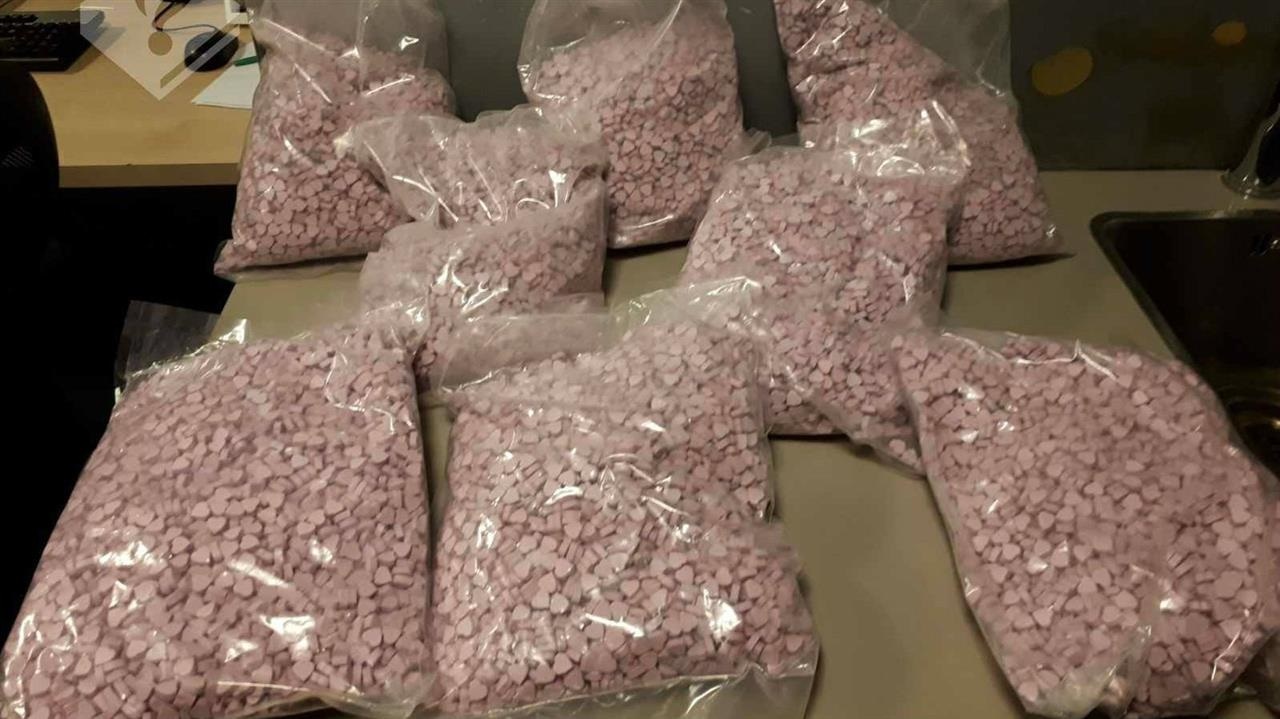Illegal drug waste dumping is a menace in Brabant. How dangerous is the waste of synthetic drugs such as xtc and speed? What damage does that cause? How to clean it up?
Omroep Brabant asked the Noord-Brabant environment agency (Omgevingsdienst Noord-Brabant, ODNB), which coordinates the removal of drug waste.
In all colours of the rainbow, mostly in blue, jerry cans with drug waste are lying around our province. Left behind by drug gangs who spin mind-altering and stimulant pills in laboratories. They usually use a remote place, often a nature reserve, to illegally discard excess substances. Undoubtedly, it is an illegal multi-million dollar industry that exports all over the world.
Arie Peters, area manager of the Brabant environment agency, takes a deep breath. “We see 25 to 30 percent of all dumping. That means the rest vanishes into thin air. That is of great concern to us.”
Ecohazard
When drug waste is discarded at a dump site, for example, if jerry cans leak, plants and animal life will die. It takes years for nature to recover. Peters has clear advice for passers-by: “Stay at a distance with the wind at your back. Inhaling the hazardous substances can seriously affect the respiratory system and even be fatal.”
And not only that. Peters points to an incident where children cycled through puddles at a dump site. The youngsters turned out to be contaminated with corrosive liquids. “Their feet were covered in burns. Those are risks you don’t want to take. Almost every dumping is dealt with urgently.”
Peters: “Because production processes in drug laboratories can differ every time, it is extremely difficult to determine what substances are in the waste. So you would have to take and examine an awful lot of samples for every dumping. As a result, the waste is often not examined but immediately disposed of.”
Before the corona period, ODBN sometimes dealt with drug dumping incidents about three to four times a week, more often between March and October. The environmental agency has no explanation for this. Peters: “Most pills go abroad; it’s not tied to the festival season.” In 2019, the ODNB spent 300 hours coordinating the cleanup work. In 2020 that was 200 hours. Although the number of dumpings may fall further, according to Peters, production continued unabated.
Examples galore about innovative ways of dumping. He points to the drug pit in the Brabantse Wal nature reserve or a manure cellar in Someren. “They even go to the car wash with a van to discharge their waste there. And when it rains, they drive around with large barrels that drain through a hole in the bottom of their vehicle. For example, a kilometre-long track has been found around Nijmegen.”
Up to 100,000 euros in cleaning costs
According to area manager Peters, the total cost of an average drug dump cleanup is about €12,500. “With peaks of more than a ton,” he adds. In principle, the landowner bears the cost.
Peters has an opinion on this. “If you hold private individuals liable, you encourage them not to report themselves and to deposit the waste elsewhere. You don’t want that.” That is why usually municipalities or nature organisations pay. They can get a maximum of 25,000 euros of the costs back from the government.
Cleaning up drug waste: from fire service to waste disposal company
- The production of 1 kilogram of synthetic drugs produces approximately 18 to 24 litres of drug waste. It contains acid (hydrochloric acid, sulfuric acid and formic acid), solvents (acetone) and bases (caustic soda). All are dangerous to health and harmful to the environment.
- The fire service is the first to respond to a report to secure the location. This is done with compressed air masks and protective clothing. If jerry cans leak, they are packed in large sealable barrels.
- If the dumping site is safe, the forensics team will conduct a trace investigation.
A soil pollution specialist conducts research. In the event of leaks, the contaminated soil is excavated and stored safely. - The ODBN calls in a recognised company that transports and processes all hazardous substances. This is usually Strukton Milieutechniek, Wilchem and sometimes a waste disposal company.
- Liquid waste becomes harmless after a chemical separation process, dehydration, distillation, detoxification, neutralisation or incineration. The sand or clay is purified by evaporation, rinsing and the use of bacteria.
Source: Omroep Brabant
Translator: Martijn











